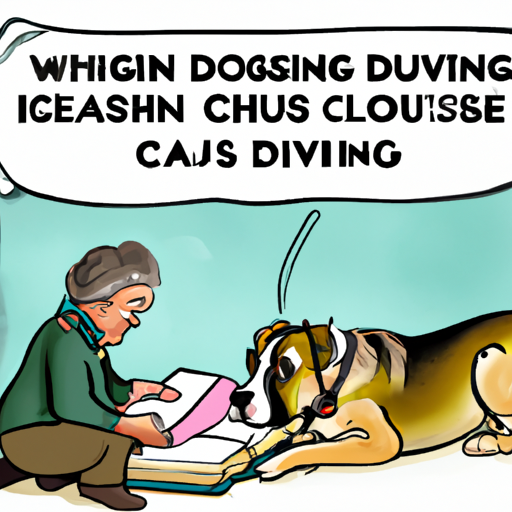As a caregiver, it’s crucial to know the ins and outs of your pet’s health. In this guide, we’ll delve deep into the topic of Cushing’s disease in dogs, how to treat it, and how to provide the best care for your furry friend.
What is Cushing’s Disease?
Cushing’s disease, also known as hyperadrenocorticism, is a condition caused by an overproduction of cortisol, the body’s natural stress hormone. This condition can lead to an array of health problems if left untreated, including:
- Hair loss
- Excessive thirst and urination
- Increased appetite
- Potbellied appearance
- Muscle weakness
- Panting
- Skin infections
Diagnosis of Cushing’s Disease
If you notice any of these symptoms in your dog, it’s crucial to bring them to the vet for a diagnosis. Your vet may perform several tests to confirm if your dog has Cushing’s disease, including:
- Blood tests: To check for high cortisol levels.
- Urine tests: To measure the body’s cortisol production.
- Imaging tests: To check for tumors in the adrenal or pituitary glands.
Treatment Options for Cushing’s Disease
Once the vet has confirmed the diagnosis, you can explore treatment options. There are several ways to manage Cushing’s disease in dogs:
Medication
Medications such as Vetoryl or Lysodren can control the overproduction of cortisol. Your vet will prescribe the appropriate dosage based on your dog’s condition.
Surgery
If your dog’s Cushing’s disease is due to an adrenal tumor, your vet might recommend surgery as a treatment. However, this is a more invasive option and may not be suitable for all dogs.
Radiation Therapy
For dogs with pituitary gland tumors, radiation therapy may be an effective treatment option. This involves using high-energy rays to destroy the tumor cells.
Managing Your Dog’s Condition
Managing Cushing’s disease requires a careful and consistent approach. Here are some steps you can take to support your dog’s health:
- Administer all medications as prescribed by your vet.
- Regularly monitor your dog’s condition and report any changes to your vet.
- Maintain a healthy diet and exercise routine for your dog.
| Key Care Points | Description |
|---|---|
| Medication | Administer medication as instructed by your vet. Avoid skipping or doubling doses. |
| Observation | Monitor your dog’s symptoms and behavior. Report any changes to your vet. |
| Diet & Exercise | Provide a balanced diet and regular exercise for your dog. Avoid overfeeding. |
FAQs on Cushing’s Disease in Dogs
Q: Can Cushing’s disease in dogs be cured?
A: Currently, there’s no known cure for Cushing’s disease. However, it can be managed effectively with proper treatment and care.
Q: Is Cushing’s disease painful for dogs?
A: While the disease itself is not painful, some of its symptoms, like skin infections or muscle weakness, can cause discomfort.
Q: How long can a dog live with Cushing’s disease?
A: With proper treatment and care, dogs with Cushing’s disease can live for many years. The prognosis varies depending on the dog’s age, overall health, and response to treatment.
Q: Can Cushing’s disease in dogs cause seizures?
A: In rare cases, dogs with Cushing’s disease may experience seizures due to an associated pituitary tumor.
Q: What should I feed my dog with Cushing’s disease?
A: A balanced diet is essential. Some vets recommend a diet low in fat and high in fiber. Always consult with your vet before making any changes to your dog’s diet.
In conclusion, while Cushing’s disease can be a daunting diagnosis, with the right treatment plan and dedicated care, your furry friend can continue to live a happy, comfortable life. Always consult with your vet to understand the best course of action for your dog’s specific needs.



